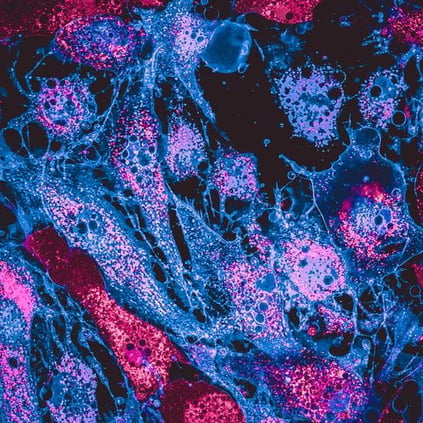Benchmark offers microelectronics assembly with placement tolerances of 1-2 microns semi-automated and 7 microns automated. So what the heck does that mean? How big (or small) is a micron, really?
Since 40-50 micron objects are the smallest things visible to the naked human eye, these extremely small dimensions can be hard to wrap your head around. So, we decided to use some great laser microscope images to put size in perspective.

Micron is short for micrometer, one-millionth of a meter, or 1 x 10-6 (denoted µ). Since the metric system is very rational, there are 1,000 microns in a millimeter and 10,000 microns in a centimeter.
What does one-millionth of a meter look like? Let’s start with things we can see. A human hair is approximately 70 microns, give or take 20 microns depending on the thickness of a given individual's hair. This is about 30 times the placement tolerance for optical systems such as lidar!
 Photo: Human hair imaged with a 3D laser microscope 250x magnification.
Photo: Human hair imaged with a 3D laser microscope 250x magnification.
The eye of a fruit fly is also 70 microns across. But the eye itself isn't the smallest unit: each eye is made up of 760-unit eyes that are about 5 microns in diameter each! This is similar to the placement tolerance Benchmark achieves in fully automated microelectronic assembly.
 Photo: Illustration of common fruit fly Drosophila Melanogaster
Photo: Illustration of common fruit fly Drosophila Melanogaster
 Photo: Eye segments of Drosophila melanogaster imaged using a 3D laser microscope at 1000x magnification.
Photo: Eye segments of Drosophila melanogaster imaged using a 3D laser microscope at 1000x magnification.
Moving to more familiar territory, our own bodies, our cells are on a similar scale to the placement precision required in microelectronics. A human skin cell is 20-40 microns across, and a white blood cell is approximately 30 microns. Red blood cells get closer to microelectronics tolerances with an average width of 6-8 microns.

Photo: Human white blood cells, imaged using a 3D laser microscope at 1000x.
To find things that are one micron, you really have to get sub-cellular. A human mitochondrion is 1 micron across but 7 microns long. Small bacteria can be as small as .5 microns. This is comparable to the placement precision Benchmark achieves in semi-automated microelectronic assembly for applications such as lidar, free space optics, medical imaging, and photonics communications and computing applications.

Photo: Human skin cell mitochondria, imaged using at 10,000x.
All of this just goes to show that sometimes the smallest things can make the biggest difference. At only one micron wide our mitrochondria are tiny, but we wouldn't survive without them. Similarly, 1 micron precision in microelectronics placement is key to the functioning of these high-tech products.
So how big IS a micron? Really, really, really, really small. And that's a big deal.
Want to find out more about the big (little) advances going on at Benchmark? Contact us or visit our Miniaturization and Microelectronics page.
